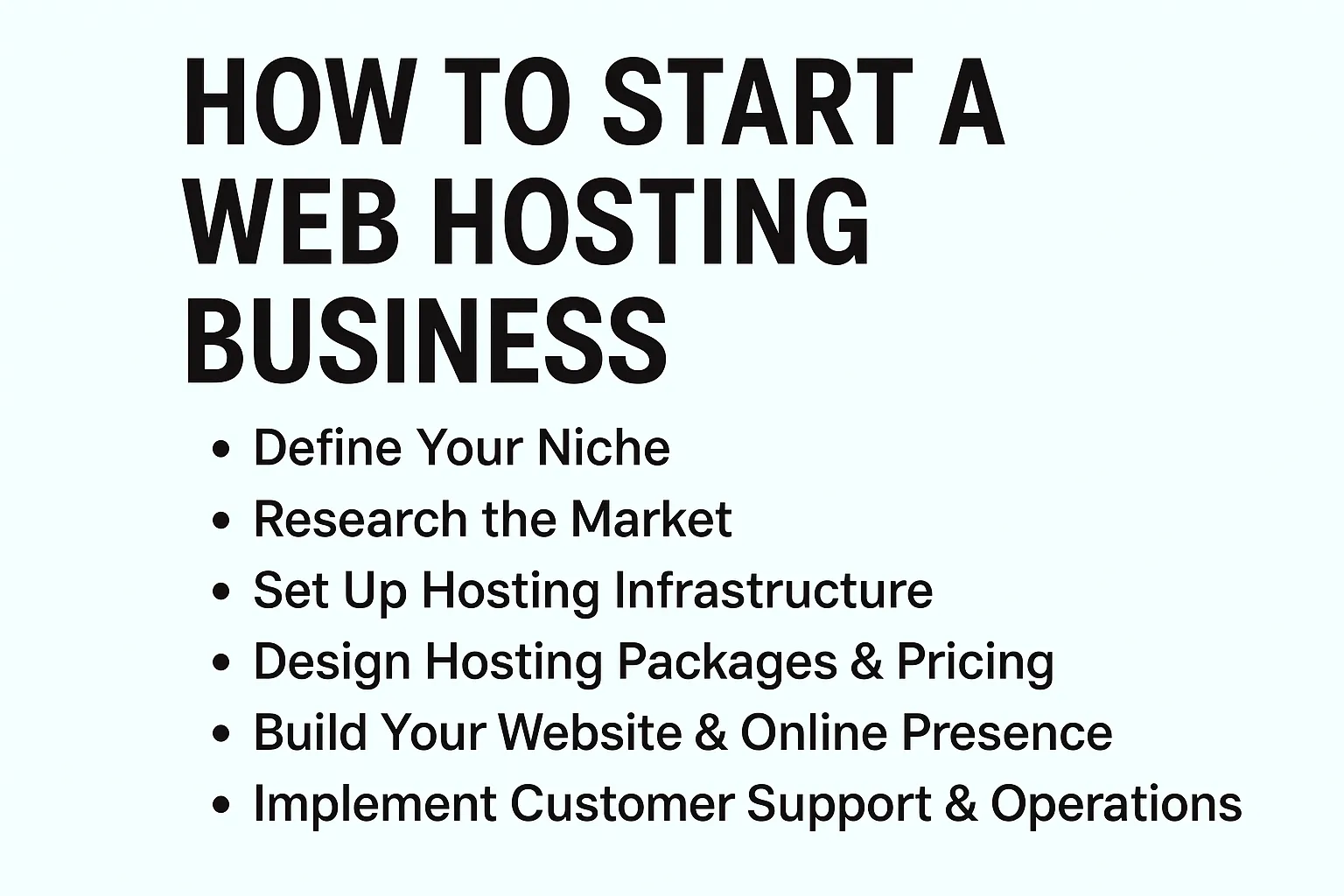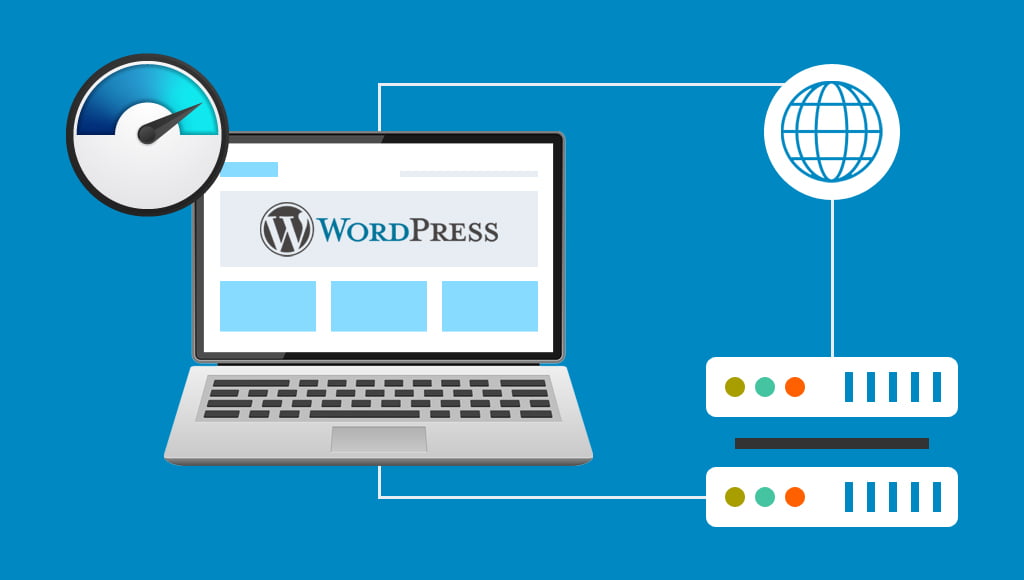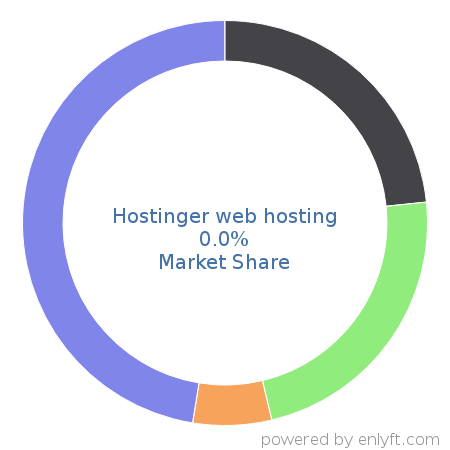In today's digital era, launching a web hosting business is not only a lucrative opportunity but also a challenging one that requires careful planning, in-depth knowledge of the industry, and a solid technical foundation. Whether you're an experienced IT professional, a budding entrepreneur, or a creative freelancer looking for a new venture, this guide will provide you with step-by-step instructions and insider tips to establish and scale a profitable web hosting company. From understanding the industry basics to implementing effective marketing strategies, this article covers every critical aspect you need to know.
1. Understand the Web Hosting Industry
The first step toward building a successful web hosting business is understanding the complex nature of the industry. Web hosting involves providing the server space and related services required to make websites accessible on the Internet. There are several types of hosting services available, each designed for different market segments and technical requirements. In-depth industry research will help you determine which niche aligns best with your skills and business vision.
Let’s break down the primary hosting services:
- Shared Hosting: Shared hosting is an entry-level service that is both affordable and beginner-friendly. Multiple websites share the same server resources, making it a cost-effective solution for small businesses, bloggers, and personal websites. However, the trade-off is limited performance and slower speeds during peak times.
- VPS Hosting: Virtual Private Server (VPS) hosting provides a middle ground between shared and dedicated hosting. With VPS, a physical server is divided into several virtual servers, each with its own resources and operating system. This model is ideal for websites that have outgrown shared hosting but do not yet require a dedicated server.
- Dedicated Hosting: For large-scale websites and enterprises, dedicated hosting offers the maximum level of performance. Clients lease an entire physical server, allowing for complete control over configuration and resources. This option, however, demands significant capital investment and technical skill to manage.
- Cloud Hosting: Cloud hosting leverages a network of interconnected servers to provide scalable and reliable hosting services. With a pay-as-you-go pricing model, cloud hosting is popular among businesses that experience fluctuating web traffic and need flexibility in resource allocation.
In addition to these core services, trends in the industry also point to a rise in Managed Hosting and specialized solutions like WordPress Hosting, which cater to users seeking optimized platforms with enhanced security and performance. Understanding these service categories deeply not only informs your business strategy but also helps pinpoint a niche that aligns with market demand and your expertise.
2. Choose Your Business Model
Selecting the right business model is crucial to your success. There are primarily two routes to consider when entering the web hosting market, each with its unique advantages and requirements.
- Reseller Hosting: This model lets you purchase hosting resources from existing providers and sell them under your brand. Reseller hosting is an excellent option for those with limited startup capital, as it eliminates the need for expensive hardware and ongoing maintenance. You essentially become a middleman, focusing on branding, customer support, and marketing.
- Dedicated Hosting: With this approach, you invest in your own dedicated servers and build a proprietary hosting infrastructure. Dedicated hosting offers maximum control, flexibility, and performance. However, it requires significant upfront investment, ongoing technical expertise, and diligent maintenance to ensure reliability.
Beyond these, consider Managed Hosting—a model that provides added value through enhanced security, regular updates, and technical support. For those who want to partner with larger companies while still keeping their branding intact, the White Label Hosting option is also available, allowing you to offer comprehensive hosting services without the hassle of backend management.
This section is not merely about choosing a model; it’s about aligning your capabilities and market positioning with a framework that supports sustainable growth. Think about your long-term objectives, resource availability, and technical proficiency while making this crucial decision.
3. Conduct Market Research
Market research is the backbone of any successful business. Diving deep into your target audience and studying your competitors will help you carve out a unique niche in an increasingly competitive landscape. Begin by identifying the specific needs and challenges faced by potential customers. Ask yourself questions like: Who are my potential clients? Are they small business owners, freelancers, bloggers, or large enterprises? What features and performance metrics matter most to them?
A comprehensive market study involves both qualitative and quantitative analysis. Use analytics tools such as Google Trends to spot emerging patterns and interests while employing SEMrush or Ahrefs to evaluate competitor strategies, pricing structures, and service quality. Gathering detailed feedback from existing customers of competing services through forums and social media can also uncover hidden insights.
- Target Audience: Create detailed customer personas outlining the specific needs, challenges, and habits of your potential clients. Consider segments such as small and medium enterprises (SMEs), personal bloggers, e-commerce sites, or developers.
- Competitive Analysis: Assess the strengths and weaknesses of established competitors. Look at their customer service, uptime history, pricing, and additional features like backup and security measures. Such evaluations will not only help you set competitive pricing but also highlight areas where you can offer superior value.
- Trends and Innovations: Keep abreast of current trends like green hosting, where companies focus on eco-friendly and energy-efficient operations, and edge computing, which brings data processing closer to the source. These innovations can help differentiate your services.
Market research is an ongoing process. As the web hosting industry evolves, so should your understanding and strategy. This iterative research process is vital to sustaining long-term growth and staying ahead in the market.
4. Create a Business Plan
A robust business plan acts as a roadmap, guiding you through the complexities of launching and scaling a web hosting business. Your business plan should articulate clear objectives, operational strategies, and financial forecasts that align with your vision.
Key components of a comprehensive business plan include:
- Mission and Vision Statements: Clearly define what your business stands for. Your mission should reflect the core values and services that you aspire to offer, while the vision provides long-term goals and benchmarks for success.
- Revenue Model: Detail the pricing structures for your hosting plans, supplementary services, and potential add-ons. Consider offering tiered packages that can cater to a wide range of clients—from individuals to large enterprises.
- Operating Strategy: This section should elaborate on the internal procedures, staffing requirements, support systems, and technology partnerships needed to run your business efficiently.
- Financial Projections: Perform a detailed cost analysis covering initial startup costs, operational expenses, and projected revenues. Tools such as LivePlan can help you forecast financial outcomes and set achievable milestones.
- SWOT Analysis: Identify your Strengths, Weaknesses, Opportunities, and Threats. This analysis aids in strategic planning and helps anticipate competitive challenges.
The business plan is not only a document to secure funding or approval from stakeholders but also a strategic tool for continuous performance evaluation. Regularly update your plan based on market shifts and feedback, ensuring that it remains a living document guiding your business growth.
5. Register Your Business
After formulating your business plan, the next critical step is to ensure that your business complies with legal and regulatory standards. Proper registration lays the foundation for your company's long-term credibility and operational integrity.
Key actions in this phase include:
- Selecting a Business Structure: Decide whether your business will operate as a sole proprietorship, partnership, Limited Liability Company (LLC), or corporation. Each structure has implications for taxes, liability, and operational flexibility.
- Business Registration: File the necessary paperwork with your local or national authorities. Choose a business name that is memorable, aligns with your brand, and isn’t already in use. In many jurisdictions, secure a trademark to protect your brand identity.
- Licenses and Permits: Depending on your location, you may need specific licenses or permits to operate a web hosting business. Consulting with a legal expert can help clarify the requirements related to data handling, privacy (such as GDPR), and e-commerce transactions.
- Financial Setup: Open a dedicated business bank account and set up accounting systems that facilitate transparent financial management. It is advisable to work with a tax professional, especially when dealing with international clients and cross-border transactions.
This administrative groundwork ensures that your business starts on a solid legal and financial foundation, allowing you to focus on growing your customer base and enhancing your service offerings.
6. Set Up Hosting Infrastructure
The technical backbone of your web hosting business is its infrastructure. High reliability, security, and scalability are non-negotiable. In today's competitive market, uptime and performance are key differentiators that can make or break customer satisfaction.
Here are some critical steps to set up robust hosting infrastructure:
- Partnership with Data Centers: Choose one or more reliable data centers that offer the necessary technical specifications for your business. Consider factors such as geographical location, network speed, redundancy measures, and green energy practices.
- Control Panel Integration: Implement industry-standard control panels like cPanel, Plesk, or DirectAdmin. These tools offer your clients an intuitive interface for managing their websites, emails, and databases.
- Security Measures: Invest in robust security protocols. Ensure that firewalls, intrusion detection systems, and DDoS protection are in place to safeguard your servers and client data. Regular security audits, SSL/TLS encryption, and automated backups are essential to maintain trust and performance.
- Scalability and Redundancy: Design your infrastructure with scalability in mind. Leverage cloud solutions and Content Delivery Networks (CDNs) to handle traffic surges. Redundancy measures, such as backup servers and failover systems, are crucial to maintaining service continuity during hardware failure or cyber threats.
Advanced features such as automated deployment, containerization (e.g., Docker), and orchestration tools (e.g., Kubernetes) can further enhance your hosting environment by ensuring efficient resource management and reducing downtime.
7. Develop Your Website
Your website is your digital storefront—it is where potential customers will learn about your offerings and form their first impressions. A high-quality, user-friendly website is essential to attract customers and convert visitors into paying clients.
Focus on these key elements when developing your website:
- Design and Usability: Invest in a professional design that reflects your brand identity. Ensure the website is responsive, well-optimized for different devices, and easy to navigate. A clear layout with accessible information drives trust and credibility.
- Service Showcase: Clearly lay out the hosting packages, pricing models, features, and benefits in an organized manner. Use comparison tables, testimonials, and case studies to highlight the advantages of your services.
- Secure Billing Systems: Integrate a secure and reliable billing system, like WHMCS or ClientExec, to handle subscriptions, payments, and customer account management. This not only ensures smooth financial operations but also enhances the user experience.
- Support Integration: Include multiple customer support channels on your website—live chat, ticketing systems, email support, and even an FAQ or knowledge base—to address common issues and improve overall customer satisfaction.
Regular website updates, performance tuning, and SEO strategies are key to staying visible in search engines and ahead of your competition. Consider periodically reviewing your content and interface to ensure you remain in sync with modern user expectations and technical standards.
8. Implement Marketing Strategies
No matter how outstanding your hosting service is, success depends on reaching the right audience. A well-thought-out marketing strategy is essential to attract, engage, and retain customers in an increasingly competitive digital market.
Consider the following integrated marketing techniques:
- Search Engine Optimization (SEO): Optimize your website with on-page and off-page SEO techniques. Conduct keyword research specifically related to web hosting, and develop content that addresses common queries, reviews, and tutorials. High-quality backlinks and regular content updates can significantly boost your search engine ranking.
- Social Media Marketing: Engage with potential clients on platforms such as Twitter, LinkedIn, Facebook, and Instagram. Share industry news, client testimonials, and technical tips regularly. Social media also offers a platform to run targeted advertising campaigns.
- Email Marketing: Build a mailing list, and conduct email campaigns that include newsletters, promotions, product updates, and targeted offers. Personalizing communications based on user behavior can increase engagement rates.
- Affiliate and Referral Programs: Launch an affiliate program to incentivize bloggers, influencers, and current clients to refer new customers. Competitive commissions and performance-based incentives can help drive consistent traffic.
- Paid Advertising: Invest in Google Ads and Facebook Ads. These platforms allow highly targeted ads based on demographics, interests, and online behavior, ensuring that your ads reach the most relevant potential customers.
Regular performance tracking and A/B testing of various marketing campaigns will help refine your strategies over time, ensuring that your efforts deliver measurable results in increased traffic and conversions.
9. Provide Exceptional Customer Support
When it comes to the web hosting industry, your customers' satisfaction is paramount. Excellent customer support can differentiate your services from competitors and drive long-term loyalty. Even the best technical infrastructures can face outages or glitches; proactive and prompt customer service is essential.
- Round-the-Clock Assistance: Offer 24/7 support through different channels such as phone, live chat, and email. Customers expect immediate help when issues arise, especially if their business operations depend on your services.
- Resource Centers: Develop comprehensive FAQs, video tutorials, and documentation that empower your customers to solve simple issues on their own. A well-maintained knowledge base reduces the load on your support team and speeds up response times.
- Proactive Communication: Regularly inform clients about scheduled maintenance, upgrades, and security updates. Transparent communication builds trust and reduces frustration in the event of unexpected downtimes.
- Feedback and Continuous Improvement: Actively encourage and collect customer feedback through surveys and direct communication channels. Use this data to continuously improve your service offerings and streamline support workflows.
- Innovative Tools: Implement AI-powered chatbots and ticketing systems that can handle initial queries and route complex issues to the appropriate experts, ensuring efficiency and reducing wait times.
The goal is to create an environment where your clients feel well-supported at every stage of their journey. The stronger your customer support, the more likely your clients are to remain loyal and recommend your services to others.
10. Monitor and Scale Your Business
Maintaining a successful web hosting business involves continuous monitoring of operations and proactive scaling to meet growing demands. Establishing key performance indicators (KPIs) is crucial—metrics such as uptime, load times, customer satisfaction, conversion rates, and churn provide insights into how well your business is performing.
Some actionable steps include:
- Performance Metrics: Develop dashboards that track uptime, server response time, and overall availability. Tools like Pingdom and New Relic can provide real-time data helping you quickly resolve issues.
- Customer Analytics: Regularly survey your clients and analyze customer support interactions to measure satisfaction and identify areas needing improvement.
- Infrastructure Expansion: As your user base grows, invest in additional servers, enhanced cloud solutions, or even geographic redundancy to support greater traffic. The scalability of your infrastructure is key to handling both planned and unplanned surges.
- New Service Offerings: Keep an eye on emerging trends such as AI-powered hosting solutions, managed WordPress packages, or specialized e-commerce hosting. Expanding your service portfolio in response to customer needs can create additional revenue streams.
- Investment in Marketing and Technology: Consider reinvesting a portion of your profits into advanced technological tools and more aggressive marketing campaigns. Staying ahead of industry developments ensures you remain competitive in a rapidly evolving digital world.
Regular reviews of business performance and a flexible growth strategy will position your company to adapt to new challenges and opportunities as they arise.
Conclusion
Launching a web hosting business requires more than just technical know-how—it demands a strategic blend of industry knowledge, market research, technical infrastructure, and exceptional customer service. As you’ve seen, every step of the process, from understanding the hosting industry to scaling your operations, plays a critical role in building a robust business model.
This guide has detailed each element of the business, offering insights into various hosting models, comprehensive market research approaches, tactical business planning, and effective customer support strategies. In addition, it highlighted important trends and innovations, such as cloud computing, energy-efficient data centers, and the rise of managed hosting services, which can serve as important differentiators in a crowded marketplace.
By diligently following these outlined steps, maintaining a customer-first approach, and continually revising your strategies based on feedback and performance data, you will be well on your way to creating a thriving web hosting company. Whether you choose to start as a reseller or invest in dedicated hosting infrastructure, the key is to remain adaptable in an ever-changing digital landscape. Combining innovative technology with excellent service is the recipe for lasting success in the world of web hosting.
Remember, the journey of building a web hosting business is a continuous learning process. Stay informed with the latest trends, invest in ongoing technical training, and always be prepared to adapt to market shifts. Your commitment to improvement and excellence is what will ultimately propel your business forward.
If you are prepared to dedicate time, resources, and passion towards building this business, the potential for success in today’s fast-paced digital environment is enormous. Embrace the challenge, harness your technical skills, and step confidently into an industry with boundless growth opportunities.




